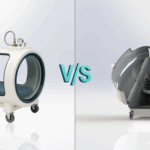Millions of people die each year from medical errors and infections linked to health care, and going into hospital is far riskier than flying, the World Health Organization said.
 “If you were admitted to hospital tomorrow in any country, your chances of being subjected to an error in your care would be something like 1 in 10. Your chances of dying due to an error in health care would be 1 in 300,” Dr Liam Donaldson, the WHO’s newly appointed envoy for patient safety, told a news briefing.
“If you were admitted to hospital tomorrow in any country, your chances of being subjected to an error in your care would be something like 1 in 10. Your chances of dying due to an error in health care would be 1 in 300,” Dr Liam Donaldson, the WHO’s newly appointed envoy for patient safety, told a news briefing.
This compared with a risk of dying in an air crash of about 1 in 10 million passengers, according to Dr Donaldson, formerly England’s chief medical officer.
“It shows that health care generally worldwide still has a long way to go,” he said.
Hundreds of millions of people suffer infections linked to health care each year. Patients should ask questions and be part of decision-making in hospitals, which must use basic hygiene standards and the WHO’s checklist to ensure safe surgical procedures are followed.
More than 50% of acquired infections can be prevented if health care workers clean their hands with soap and water or an alcohol-based handrub before treating patients.
Of every 100 hospitalised patients at any given time, 7 in developed and 10 in developing countries will acquire at least one health care-associated infection, according to the United Nations agency.
“The longer patients stay in an ICU (intensive care unit), the more at risk they become of acquiring an infection,” it said. Medical devices such as urinary catheters and ventilators are associated with high infection rates.
‘High risk business’
Each year in the United States, 1.7 million infections are acquired in hospital, leading to 100,000 deaths, a far higher rate than in Europe, where 4.5 million infections caused 37,000 deaths, according to the WHO.
“Health care is a high-risk business, inevitably, because people are sick and modern health care is delivered in a fast-moving, high-pressured environment involving a lot of complex technology and a lot of people,” Dr Donaldson said.
A heart operation can involve a team of up to 60 people, about the same number needed to run a jumbo jet, he said.
“Infection is a big problem, injuries after falls in hospitals is a big problem and then there are problems that are on a smaller scale, but result in preventable deaths. Medication errors are common,” he said.
Risk is even higher in developing countries, with about 15% of patients acquiring infections, said Dr Benedetta Allegranzi of the WHO’s “Clean Care is Safer Care” programme.
“The risk is really higher in high-risk areas of the hospitals, in particular ICUs or neonatal units in developing countries.”
About 100,000 hospitals worldwide now use the WHO’s surgical safety checklist, which the agency said has been shown to reduce surgery complications by 33% and deaths by 50%.
If the checklist is effectively used worldwide, an estimated 500,000 deaths could be prevented each year, it says.
“Frankly, if I was having an operation tomorrow, I wouldn’t go into a hospital that wasn’t using the checklist because I wouldn’t regard it as safe,” said Dr Donaldson.
(Reuters Health, Stephanie Nebehay, July 2011) – Edited by Salvagente
Use preventive and alternative measures to keep healthy and out of hospital. Ozone steam therapy is a good way to kill bacteria and infections.
__________________________________________________________________________








Leave a Reply